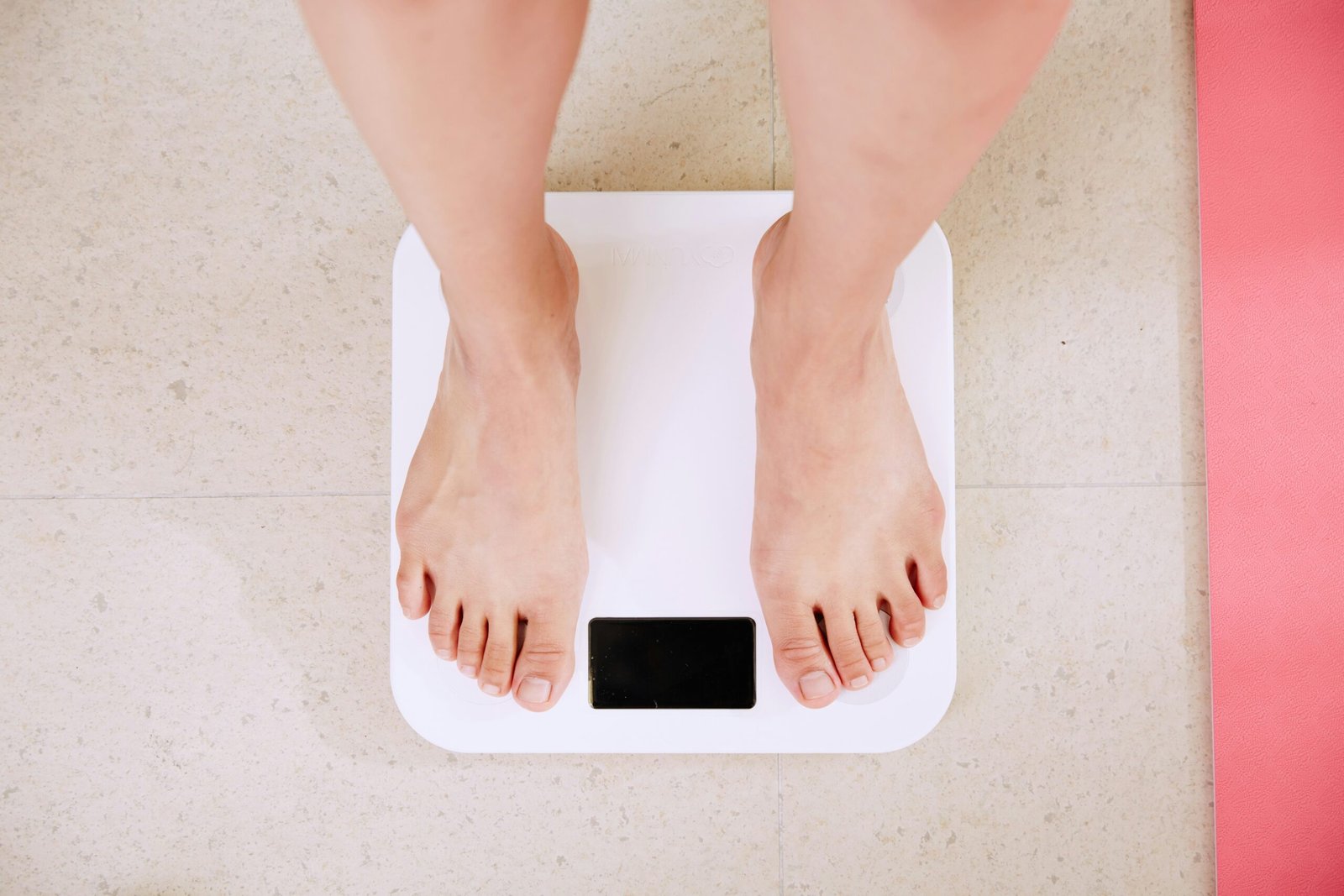In today’s world, many women find themselves juggling various responsibilities, such as career obligations, family commitments, and social engagements. These demands can significantly hinder their weight loss efforts and lead to feelings of frustration. Understanding the challenges that busy women face is crucial for developing effective weight loss strategies that fit into their lifestyles.
Time constraints are perhaps the most significant barrier for many women striving to maintain a healthy lifestyle. With packed schedules, finding time to prepare nutritious meals, exercise regularly, or even sleep well becomes increasingly difficult. This often results in opting for convenient, unhealthy food options or skipping meals altogether, which can negatively impact energy levels and metabolic health.
Additionally, the stress associated with balancing various roles can exacerbate weight management issues. When under pressure, many individuals turn to food as a source of comfort, leading to emotional eating and further complicating weight loss efforts. Stress can also trigger hormonal changes that promote weight gain, particularly in the abdominal area, making it harder to shed excess pounds.
Another critical aspect to consider is the lack of support that busy women often experience. With limited time for self-care, it can be challenging to connect with communities or find resources that provide encouragement and accountability. This isolation may lead to demotivation and setbacks in their weight loss journey.
Recognizing these hurdles is the first step toward developing an individualized approach to weight loss. By understanding the complexities of a busy lifestyle, women can identify specific challenges and tailor actionable strategies that promote sustainable weight loss, all while still managing their busy lives. Acknowledging these factors ultimately helps create a more compassionate outlook and fosters resilience in the face of weight loss challenges.
Setting Realistic Goals
Setting realistic goals plays a crucial role in a successful weight loss journey, especially for busy women balancing various responsibilities. Defining specific, measurable, attainable, relevant, and time-bound (SMART) objectives can significantly enhance motivation and provide a clear path toward achieving weight loss ambitions. The first step is to identify specific outcomes; instead of a vague aim to “lose weight,” a more precise goal would be “to lose 10 pounds in three months.” This specificity helps clarify the desired outcome, making it easier to create an actionable plan.
Next, incorporating measurable criteria is essential for tracking progress. When aiming for weight loss, it can be beneficial to monitor metrics such as pounds lost, inches off the waist, or improved fitness levels. This quantifiable approach empowers women to observe their transformation over time, fueling motivation. Furthermore, goals should be attainable; recognizing the time constraints of a busy lifestyle can help in setting realistic expectations. It might be more achievable to aim for a weight loss of one pound per week rather than an overwhelming goal. Attainable goals foster a sense of accomplishment and prevent discouragement.
Additionally, relevance ensures that the weight loss objectives align with both personal values and lifestyle. Women should consider their individual circumstances, such as work schedules, family commitments, and preferred forms of exercise. Lastly, setting time-bound goals adds urgency and structure to the weight loss plan. By determining a deadline for achieving specific milestones, it encourages commitment and consistency. In summary, by setting realistic goals that adhere to the SMART criteria, busy women can create a structured and motivating framework for their weight loss journey, paving the way for sustainable success.
Creating a Balanced Meal Plan
Designing a balanced meal plan is an essential step for busy women aiming for weight loss while maintaining a nutritious diet. A well-structured meal plan not only aids in achieving weight management goals but also ensures that essential nutrients are not overlooked. To create a meal plan that fits a hectic schedule, one primary strategy is meal prepping. By preparing meals ahead of time, women can save effort during the week, making it easier to stick to healthy eating habits despite a packed agenda.
When planning meals, it is crucial to incorporate a variety of wholesome foods to maximize nutrient intake. This includes a balance of lean proteins, whole grains, healthy fats, and a diverse selection of fruits and vegetables. For instance, consider meals that feature grilled chicken (a lean protein), quinoa (a whole grain), avocados (a healthy fat), and a colorful array of vegetables such as spinach, bell peppers, or carrots. These combinations not only provide essential nutrients but also keep meals interesting and satisfying.
Managing portion sizes is another vital aspect of a successful meal plan. To promote weight loss, being mindful of portion sizes can help prevent overeating while ensuring adequate nutrition. A helpful approach is to use smaller plates, which often trick the eye into perceiving a full plate of food. Additionally, employing measuring tools or utilizing the plate method—where half the plate is filled with vegetables, a quarter with protein, and a quarter with grains—can effectively guide portion control without feeling deprived.
Ultimately, creating a balanced meal plan tailored to a busy lifestyle is achievable with thoughtful preparation and a focus on wholesome ingredients. By integrating these practices, women can navigate weight loss goals while enjoying varied and fulfilling meals.
Incorporating Quick Workouts
For busy women striving for weight loss, incorporating quick workouts into their daily routines can be a highly effective strategy. Understanding that time is often a limiting factor, it is crucial to explore exercises that can be completed in under 30 minutes. Such workouts not only help in managing weight but also promote overall health and fitness.
High-Intensity Interval Training (HIIT) is one of the most efficient methods for achieving significant results in a short amount of time. This form of exercise alternates between short bursts of intense activity and fixed periods of less-intense activity or rest. For instance, a simple HIIT workout could include 20 seconds of jumping jacks followed by 10 seconds of rest, repeated for 10 sets. This approach maximizes calorie burn and improves cardiovascular fitness, making it ideal for busy individuals.
Bodyweight exercises are also excellent for those with limited time and equipment. Simple movements such as push-ups, squats, and lunges can be highly effective in building strength and endurance. A quick circuit could involve performing 10 reps of each movement with minimal rest in between. This not only saves time but can easily be done in the comfort of home.
Yoga and Pilates are additional options worth considering. These approaches offer flexibility and core strengthening benefits, often requiring only a mat and a few minutes of dedicated time. An engaging routine of sun salutations or a set of Pilates leg lifts can easily fit into a busy schedule.
Ultimately, the key is to find engaging and varied exercises that can be seamlessly integrated into daily routines. Whether it’s a lunchtime workout or an early morning series of stretches, dedicating even brief moments to physical activity can lead to sustainable weight loss and improved well-being.
Staying Hydrated
Hydration plays a crucial role in weight loss, especially for busy women who may often overlook this essential aspect of their health. Proper hydration not only aids in metabolism regulation but also helps in appetite control, which can be particularly beneficial when trying to lose weight. Water is vital for various bodily functions, and ensuring adequate intake can significantly influence one’s weight loss journey.
To increase water intake throughout the day, it is advisable to set specific goals. For instance, aiming for a target of eight glasses of water daily can establish a routine. Carrying a reusable water bottle can serve as a constant reminder to drink. Additionally, incorporating water-rich foods such as cucumbers, oranges, and spinach into meals can contribute to overall hydration levels. These foods not only provide essential nutrients but also add a refreshing element to one’s diet.
Making drinking water more enjoyable is another effective strategy. Infusing water with slices of fruits like lemon, berries, or mint can enhance its flavor, making the experience more pleasurable. Herbal teas and flavored sparkling water are excellent alternatives that can also help achieve hydration goals without adding calories. Furthermore, scheduling regular breaks to drink water, such as during work meetings or while engaging in other activities, can make it easier to remember to hydrate.
Proper hydration can positively influence metabolism by ensuring that the body operates efficiently. When adequately hydrated, the body can effectively burn calories. Moreover, it can assist in appetite control, as thirst is often mistaken for hunger. By staying hydrated, busy women can mitigate unnecessary snacking, allowing for better weight management. By prioritizing hydration, women can enhance their well-being and support their weight loss efforts.
Prioritizing Sleep and Stress Management
Achieving weight loss goals often requires addressing factors that extend beyond diet and exercise, especially for busy women. Two crucial elements that significantly impact weight loss are sleep quality and stress management. Research indicates that inadequate sleep can lead to weight gain and hinder weight loss efforts due to the disruption of hormones that regulate appetite and metabolism. For instance, a lack of restorative sleep can increase ghrelin levels (the hunger hormone) and decrease leptin levels (the hormone responsible for feeling full), ultimately leading to increased cravings and overeating.
To improve sleep quality, it is essential to establish a regular sleep schedule, prioritizing at least seven hours of sleep per night. Creating a sleep-conducive environment involves minimizing noise and light, ensuring proper bedding, and maintaining a comfortable room temperature. Additionally, integrating relaxation techniques such as deep breathing exercises or gentle yoga before bedtime can further enhance sleep quality and promote a calm state of mind.
Stress management is another vital component that can influence weight loss. High-stress levels often lead to emotional eating, where individuals turn to food for comfort, or to a preference for high-calorie, unhealthy foods. Engaging in mindfulness practices, such as meditation or journaling, allows individuals to process their emotions and reduce the likelihood of stress-induced eating. Setting aside time for hobbies or leisure activities can also serve as effective stress relievers and help dismantle the feeling of being overwhelmed.
Incorporating strategies to improve sleep and manage stress not only aids in weight loss but can also enhance overall well-being. By recognizing the relationship between these factors and weight management, busy women can optimize their efforts towards achieving their weight loss objectives in a healthy, sustainable manner.
Utilizing Technology and Apps
In today’s digital age, technology plays a vital role in supporting weight loss journeys, particularly for busy women who often struggle to balance their commitments. Various applications and online resources are designed to assist in tracking meals, workouts, and overall progress, streamlining the weight loss process. By leveraging these technological tools, users can enhance their accountability and motivation, vital components for achieving weight loss goals.
One of the primary benefits of utilizing apps for weight loss is the ability to accurately track caloric intake. Applications such as MyFitnessPal and Lose It! enable users to log their daily meals conveniently, providing an overview of their nutritional intake. These apps often include extensive databases of food items, allowing for quick and easy entry. Moreover, many have features that allow for barcode scanning, significantly reducing time spent on meal tracking. This data not only helps maintain awareness of calorie consumption but also empowers users to make healthier food choices over time.
Workout tracking apps, such as Fitbit, Nike Training Club, and Apple Health, provide users with an opportunity to monitor their physical activities effortlessly. These platforms often allow for customized workout plans, setting specific fitness goals, and tracking progress over time. The fusion of technology and fitness enables users to view their improvement, making the experience more rewarding and encouraging. Additionally, many of these apps integrate social features, enabling users to connect with friends and share achievements, which further fosters a sense of community.
Online forums and support groups, such as those found on platforms like Reddit or specialized weight loss communities, also provide invaluable encouragement. Connecting with like-minded individuals offers a space for sharing experiences, discussing challenges, and celebrating successes. The combination of tracking features and community support creates a well-rounded approach to weight loss that is particularly beneficial for busy women striving to achieve their goals amidst their hectic lifestyles.
Healthy Snacking Options
Incorporating healthy snacks into a busy lifestyle is essential for maintaining energy levels and preventing overeating during meals. Mindful snacking can significantly impact weight management, particularly for women juggling various responsibilities. By choosing nutrient-dense snacks, busy women can satisfy their cravings while supporting their weight loss efforts. Here are some quick and easy healthy snacking options that can be prepared in no time.
Firstly, fresh fruits and vegetables are always a great choice. Carrot sticks, cucumber slices, or bell pepper strips paired with hummus or a low-fat dip can provide a satisfying crunch. Fruits like apples, bananas, or berries are not only convenient but also packed with vitamins and natural sugars for a quick energy boost. For a bit of indulgence, try pairing apple slices with almond butter for a delicious and nutritious treat.
Another practical option is Greek yogurt. This versatile snack is rich in protein and probiotics, which contribute to a healthy digestive system. You can enhance its flavor by adding a handful of nuts, seeds, or a drizzle of honey. Alternatively, creating a yogurt parfait with layers of fruit and granola is both appealing and health-conscious.
For those who enjoy savory snacks, consider air-popped popcorn seasoned with minimal salt or nutritional yeast for a cheesy flavor without the calories. Additionally, unsalted nuts provide healthy fats and protein, making them a satisfying and fulfilling option. Keeping portion sizes in check is important, so opt for pre-portioned bags or containers for convenience.
Finally, it is important to practice mindful snacking, which involves being aware of hunger cues and focusing on the eating experience. This method can help prevent mindless eating and reduce overall caloric intake. By selecting nutrient-rich snacks that are quick to prepare, busy women can enjoy their favorite treats while staying on track with their weight loss goals.
Building a Support System
Establishing a robust support system is crucial for women looking to lose weight while managing busy schedules. A reliable network of friends, family, and online communities can provide motivation, encouragement, and accountability throughout the weight loss journey. Sharing goals with these individuals helps to create a sense of commitment and can significantly enhance one’s resolve to achieve desired outcomes.
First, connecting with friends and family members who share similar weight loss objectives can foster a mutual commitment to exercise and healthy eating. Regularly scheduled workout sessions or healthy cooking nights can turn these goals into enjoyable social activities. Furthermore, communicating openly about progress or setbacks allows for emotional support and constructive feedback, proving helpful for a woman balancing her busy life.
Online platforms have emerged as valuable resources for those seeking larger networks of accountability. Engaging in weight loss forums or social media groups allows individuals to share tips, motivate one another through challenges, and celebrate successes collectively. The anonymity of online environments can also provide a safe space for discussing struggles and seeking advice. Topical discussions serve as a reminder that many are facing similar hurdles, fostering a community of support.
Additionally, partnering with an accountability buddy—whether a close friend or an online connection—can be an effective strategy. This relationship encourages mutual goal-setting and tracking of progress, which holds each other responsible. By checking in regularly, women can share successes and struggles alike, leading to reinforced commitment towards their health and fitness goals.
Ultimately, a strong support system can enhance the weight loss experience, helping to keep motivation levels high amidst the challenges of a busy life. Building and nurturing these relationships is essential for success, making the pursuit of weight loss more engaging and sustainable over time.




